Cutting Downtime in Germany: How Pallet Changing Machines Help
Unplanned downtime can feel like a constant battle in any busy production or logistics facility. In a high-stakes market like Germany, where every minute of productivity counts, a single broken pallet can bring an entire line to a halt. You see your team manually unstacking and re-stacking goods, a slow and risky process that eats into your profits and delays shipments. This is a common bottleneck, and it costs more than just time; it risks product damage and worker safety. But what if you could solve this problem in under 60 seconds? A pallet changing machine offers a direct solution, turning a major point of friction into a smooth, automated step in your process.
Pallet changing machines help cut downtime in Germany by automating the transfer of goods from one pallet to another. This technology replaces slow and error-prone manual labor. It dramatically reduces the time needed to handle issues like damaged pallets or the need to switch to shipping-compliant pallets. By doing this, it keeps production lines and logistics operations running continuously and efficiently. This minimizes disruptions and protects the integrity of your products.
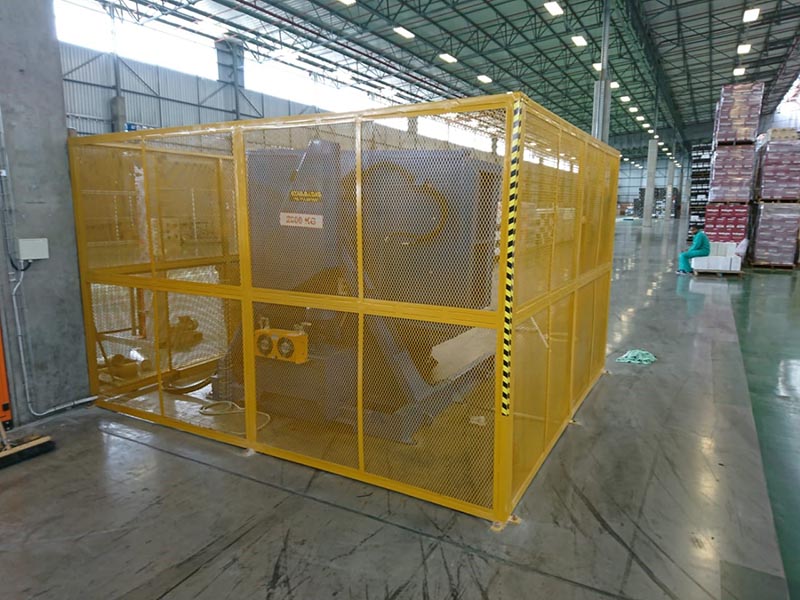
This might sound like a simple fix, but the impact on your overall operation is significant. It's not just about speed; it’s about creating a more resilient, efficient, and safer workflow. From my years of designing and implementing these systems for clients, I've seen firsthand how this one piece of equipment can transform a facility's output. Let's dig deeper into how these machines specifically address the challenges faced by businesses in Germany and deliver a real return on investment.
How do pallet changers directly boost operational efficiency in German manufacturing?
Is your warehouse team constantly interrupted by the need to handle pallet issues? A single cracked or non-standard pallet arrives, and suddenly, your workflow stops. Your staff has to manually transfer the entire load, a task that is not only slow but also physically demanding and risky. Each time this happens, your carefully planned schedule is disrupted, and your efficiency metrics suffer. This manual bottleneck is a hidden drain on your resources.
Pallet changers directly boost operational efficiency by transforming this manual, time-consuming task into a swift, automated process. A pallet changer can transfer a full load in about a minute. This speed frees up your employees to focus on more productive activities. It ensures a continuous flow of materials through your facility. And it nearly eliminates the downtime caused by pallet-related problems, keeping your operation on track.
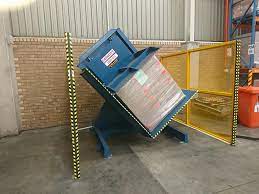
Breaking Down the Efficiency Gains
In the German market, efficiency isn't just a goal; it's a baseline requirement for survival and growth. Every process is scrutinized for potential optimization. Pallet handling is a critical, yet often overlooked, area where significant gains can be made. A pallet changer introduces a level of speed and consistency that manual labor simply cannot match. Think about the entire chain of events. When a non-compliant pallet is identified, the entire load is typically moved to a staging area. Then, workers must carefully unstack, move, and re-stack every single item. This can take anywhere from 15 minutes to over an hour, depending on the load. A pallet changer accomplishes the same task in less than 60 seconds. This time saving is a direct boost to your operational throughput.
From Bottleneck to Free-Flowing Process
Integrating a pallet changer fundamentally changes your material flow. It removes a major potential bottleneck at both the inbound and outbound stages.
- Inbound Logistics: Suppliers may use different pallet types or sizes. A pallet changer allows you to quickly transfer incoming goods to your standardized in-house pallets, ready for your automated storage and retrieval systems (ASRS) or internal transport. This eliminates delays at the receiving dock.
- Outbound Logistics: You can keep your high-quality internal pallets and transfer finished goods to cheaper, one-way shipping pallets just before dispatch. This reduces pallet loss and saves costs.
This table clearly illustrates the operational advantages:
| Metric | Manual Pallet Change | Automated Pallet Changer | Impact on German Operations |
|---|---|---|---|
| Time per Pallet | 15-60+ minutes | < 1 minute | Drastically increases throughput and reduces vehicle waiting times. |
| Labor Requirement | 2-3 workers | 1 operator (often part-time) | Frees up skilled labor for value-added tasks, addressing labor shortages. |
| Risk of Product Damage | High | Very Low | Protects goods, reducing waste and credit claims. Crucial for high-value products. |
| Process Consistency | Low (depends on workers) | High (machine-controlled) | Ensures predictable, reliable performance that aligns with Industry 4.0 principles. |
| Ergonomic Risk | High (lifting, bending) | Minimal | Improves worker safety and reduces absences, aligning with strict German safety laws (Arbeitsschutzgesetz). |
By automating this single task, you create a ripple effect of positive changes throughout your entire operation, leading to a more streamlined, predictable, and ultimately more profitable business.
What are the key financial benefits of investing in a pallet changing machine for a German business?
As a business owner, you scrutinize every major purchase. You see the operational delays caused by manual pallet handling, but the upfront cost of a new machine can make you pause. You need to be certain that the investment will not only pay for itself but also deliver a clear financial return. You worry whether the promised savings in time and labor will actually translate to a healthier bottom line.
The key financial benefits of investing in a pallet changing machine are a fast return on investment (ROI) driven by direct, measurable savings. These come from a sharp reduction in manual labor costs, a significant decrease in expenses from damaged products, and the elimination of ongoing fees for pallet rental programs. These concrete financial gains start accumulating from day one, making it a smart, strategic investment.
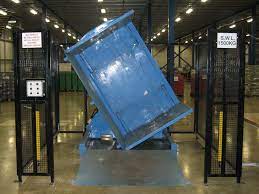
Calculating Your Return on Investment (ROI)
For any business, but especially in a cost-conscious environment like Germany, the numbers have to make sense. A pallet changing machine is not just an operational tool; it is a financial one. Let's break down how to calculate the ROI. It’s simpler than you might think and is based on three core areas of savings.
1. Direct Labor Cost Reduction
This is the most straightforward calculation. First, determine the time your team currently spends on manual pallet transfers. Let's say you handle 10 problematic pallets per day, and each one takes two workers 20 minutes to handle.
- Time spent per day: 10 pallets * 20 minutes = 200 minutes
- Labor hours per day: 200 minutes / 60 = 3.33 hours
- Total labor hours (2 workers): 3.33 * 2 = 6.66 hours per day
Now, multiply this by the fully-loaded hourly wage of an employee in Germany (including social contributions). If that rate is, for example, €30/hour, your daily cost for this task is 6.66 * €30 = €199.80. Annually, that's over €50,000 spent on a non-value-added task. A pallet changer reduces this labor to nearly zero, immediately putting that money back into your budget.
2. Reduced Product Damage and Waste
Manual handling is inconsistent. Products get dropped, boxes are crushed, and sensitive materials are compromised. A pallet changer handles loads gently and securely every time. If your current damage rate from manual handling is even 0.5% of the value of the goods transferred, the costs add up quickly. For a load worth €5,000, that’s €25 lost. Over a year, this can amount to thousands of euros in waste, customer claims, and administrative costs. A pallet changer can reduce this damage-related cost by over 90%.
3. Pallet Fleet and Rental Savings
This is a huge, often underestimated, financial benefit. Many companies in Germany rely on pallet pooling services like CHEP or LPR. While convenient, these services come with rental fees, transport costs, and penalties for lost or damaged pallets. By using a pallet changer, you can create a closed-loop system with your own high-quality internal pallets. Goods arrive, are transferred off the rental pallet onto your own, and then transferred back to a cheap, one-way shipping pallet for outbound delivery. This strategy can eliminate most, if not all, of your pallet rental fees.
| Financial Factor | Cost Without Pallet Changer | Cost With Pallet Changer | Annual Savings Example (Medium-Sized Business) |
|---|---|---|---|
| Manual Labor | High, recurring cost | Minimal, one-time investment | €50,000+ |
| Product Damage | Moderate to High | Negligible | €10,000+ |
| Pallet Rental Fees | Ongoing, variable cost | Eliminated or greatly reduced | €20,000+ |
| Worker Injury Claims | A potential risk | Risk significantly reduced | Avoids costs of sick leave, insurance premium hikes. |
| Total Estimated Savings | - | - | €80,000+ |
This analysis shows that a pallet changing machine is not a cost center. It is an investment that actively reduces operational expenditures across multiple fronts, delivering a strong and rapid ROI.
How do you select the right pallet changer for specific German industry needs?
You are ready to make a move. You see the value a pallet changer can bring to your operation. But when you look at the options—inverters, pushers, tippers—the choice can seem overwhelming. Choosing the wrong machine for your specific product, load type, and workflow could be a costly error. It might not handle your goods properly or might not integrate smoothly into your German-engineered production line, creating new problems instead of solving existing ones.
Selecting the right pallet changer for specific German industry needs requires a detailed analysis of your product characteristics, load stability, required throughput speed, and the physical space in your facility. The key is to match the machine’s mechanism—such as a 180-degree inverter for robust goods or a clamp-and-push changer for fragile loads—to your unique operational context. A consultation with an experienced engineer is essential to ensure a perfect fit.
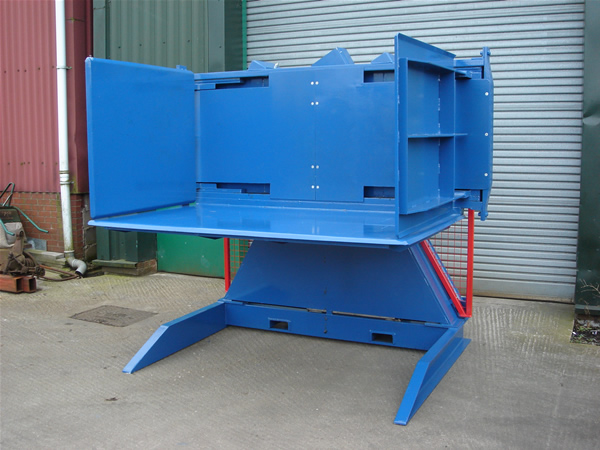
Matching the Machine to Your Mission
The German market is diverse, from automotive parts and pharmaceuticals to food and beverage and chemical drums. Each industry has unique handling requirements. The product itself is the most important factor in determining the right type of pallet changing machine. There is no one-size-fits-all solution.
1. Pallet Inverters (180° Rotation)
This is the most common and robust type of pallet changer. It clamps the load securely on the top and bottom, rotates it a full 180 degrees, and then lowers the original pallet away. The new pallet is then placed on top, and the load is rotated back.
- Best For: Durable, stable, and boxed goods. Think sacks of grain, canned beverages, blocks of paper, or solid chemical products.
- Why: The inversion process is fast and efficient, but it does exert pressure on the entire load. It's not suitable for loads that might shift or be damaged by being turned upside down.
2. Pallet Changers (Pusher or Gripper Style)
These machines are designed for more sensitive loads. Instead of inverting, a pusher-style changer gently pushes the entire load from the old pallet to the new pallet, which is waiting right beside it. Other models use side clamps to support the load during transfer without inversion.
- Best For: Fragile items, unstable loads, or products that must remain upright. Examples include glass bottles, pharmaceutical vials, open-top containers, or layered cakes of product.
- Why: This method is much gentler. It avoids any vertical pressure or inversion, preserving the integrity and orientation of the product.
3. Tippers and Tilters (90°-120° Angle)
These machines offer a middle ground. They tilt the load to an angle, allowing the product to rest against a solid sidewall. The old pallet is removed, the new one is inserted, and the machine returns to level.
- Best For: Semi-durable goods like frozen food blocks, some types of drums, or bagged products that can handle a gentle slide.
- Why: It's faster than a pusher and gentler than a full inversion, making it a versatile choice for many applications.
The table below provides a quick guide to help you start the selection process:
| Machine Type | Primary Mechanism | Ideal Load Type | Key Advantage | German Industry Example |
|---|---|---|---|---|
| Pallet Inverter | 180° rotation | Robust, stable, boxed (e.g., paper, canned goods) | High speed and efficiency for durable goods. | Food & Beverage, Paper/Pulp |
| Pallet Changer (Pusher) | Horizontal push | Fragile, unstable, must stay upright (e.g., glass, vials) | Extremely gentle handling, no inversion. | Pharmaceuticals, High-Tech Electronics |
| Pallet Tipper | 90°-120° tilt | Semi-durable, can slide (e.g., frozen blocks, drums) | Good balance of speed and gentle handling. | Chemical, Cold Storage Logistics |
Beyond the product, you must also consider factors like required speed (pallets per hour), level of automation (standalone or fully integrated into a conveyor line), and compliance with German and EU safety standards like CE marking. A thorough analysis with a knowledgeable partner is the best way to ensure your investment meets your exact needs.
My Insights
I remember standing on my own factory floor years ago, watching a team struggle with a collapsed pallet of steel wire coils. The line was stopped, the shipping truck was waiting, and I could literally feel the money draining away with every passing minute. It was a problem I had seen as a young engineer, and now as a factory owner, the pain was even more real. That experience, and many others like it, is why I am so passionate about finding simple, powerful solutions to these everyday challenges.
When I look at the profile of a leader like Javier Morales, I see a reflection of my own journey. He has worked his way up, understands the industry inside and out, and now bears the responsibility for a massive operation. His challenges—aging equipment, cost pressures, the push for digitalization—are the same challenges every industrial leader faces today.
A pallet changing machine might seem like a small piece of the puzzle, but it is a perfect example of a strategic investment that addresses multiple goals at once.
- For your goal of 95% uptime: A pallet changer is a direct assault on a common and frustrating cause of unplanned downtime. It’s a tactical tool that delivers immediate results, helping you get closer to that target.
- For your goal of reducing operating costs by 8%: This machine isn't an expense; it's a cost-killer. The ROI we discussed earlier isn't theoretical. It’s built on real savings in labor, product waste, and pallet management fees. It's a clear step toward a leaner operation.
- For your goal of digital transformation: Modern pallet changers are not isolated islands of steel. They are smart machines. They can be equipped with sensors and integrated with your Manufacturing Execution System (MES). They can provide data on cycle times, pallet counts, and operational status, feeding directly into the "total production visualization" you're aiming for. It's a foundational piece of a smart factory.
Javier is looking for a strategic partner, not just a supplier. I understand that completely. A partner is someone who has faced the same problems and is dedicated to helping you solve them. They provide support through the entire lifecycle, from selection and installation to maintenance and future upgrades. My mission with SHJLPACK is to be that partner. I built my business by solving these exact problems, first for myself and then for my clients. Now, I want to share that knowledge to help you succeed.
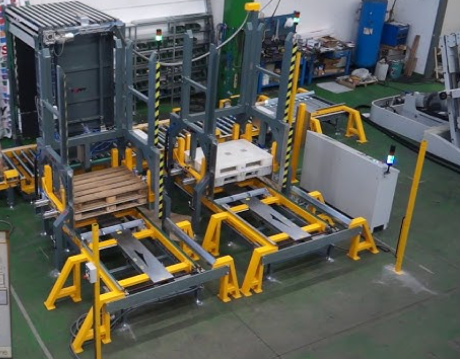
Conclusion
Investing in the right pallet changing machine cuts downtime and reduces costs. It is a vital and strategic step toward modernizing your logistics operations in Germany's competitive market.

